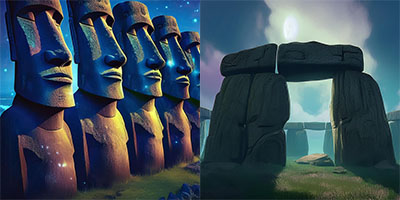Easter Island, also known as Rapa Nui, is famous for its moai, monumental statues carved between 1400 and 1650 AD. These statues, primarily made of volcanic tuff, represent ancestors and are considered the spiritual protectors of the community. During the summer solstice, the sun illuminates the moai from above, creating an almost sacred and celebratory atmosphere.
Thousands of kilometers away, Stonehenge stands as a prehistoric monument in Wiltshire, England. Built between 3000 and 2000 BC, it consists of enormous vertical stones arranged in a circle. During the summer solstice, the sun rises aligned with the central stone, attracting thousands of visitors who participate in modern celebrations that honor light and life.
Both sites demonstrate a deep connection to astronomy and natural cycles. The Rapa Nui and the ancient builders of Stonehenge used solar observation to orient their constructions and rituals, highlighting the significance of solstices in their cultures. These places are not only historical testimonies but also symbols of how humanity seeks to understand and celebrate the natural world.
 IT
IT  US
US  UK
UK  DE
DE  FR
FR  ES
ES  NL
NL  PL
PL  SE
SE  JP
JP 




